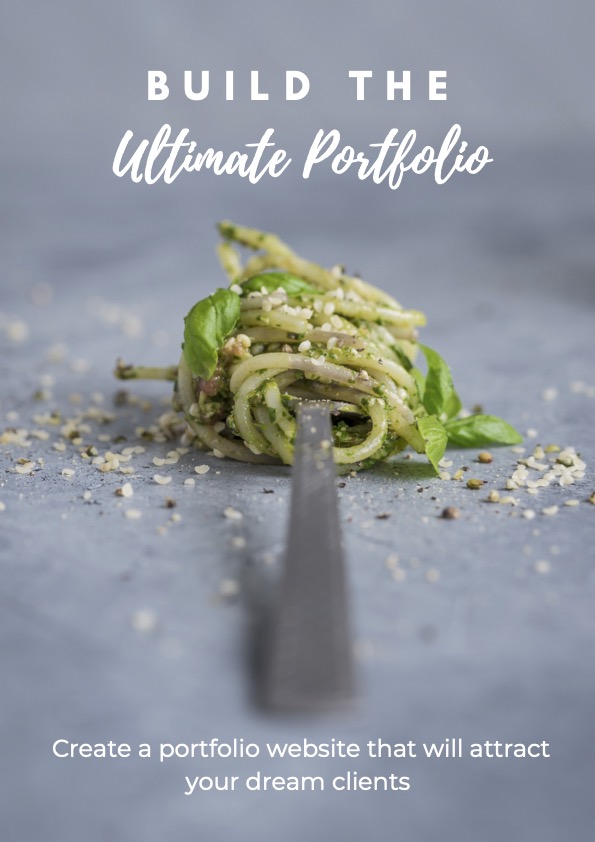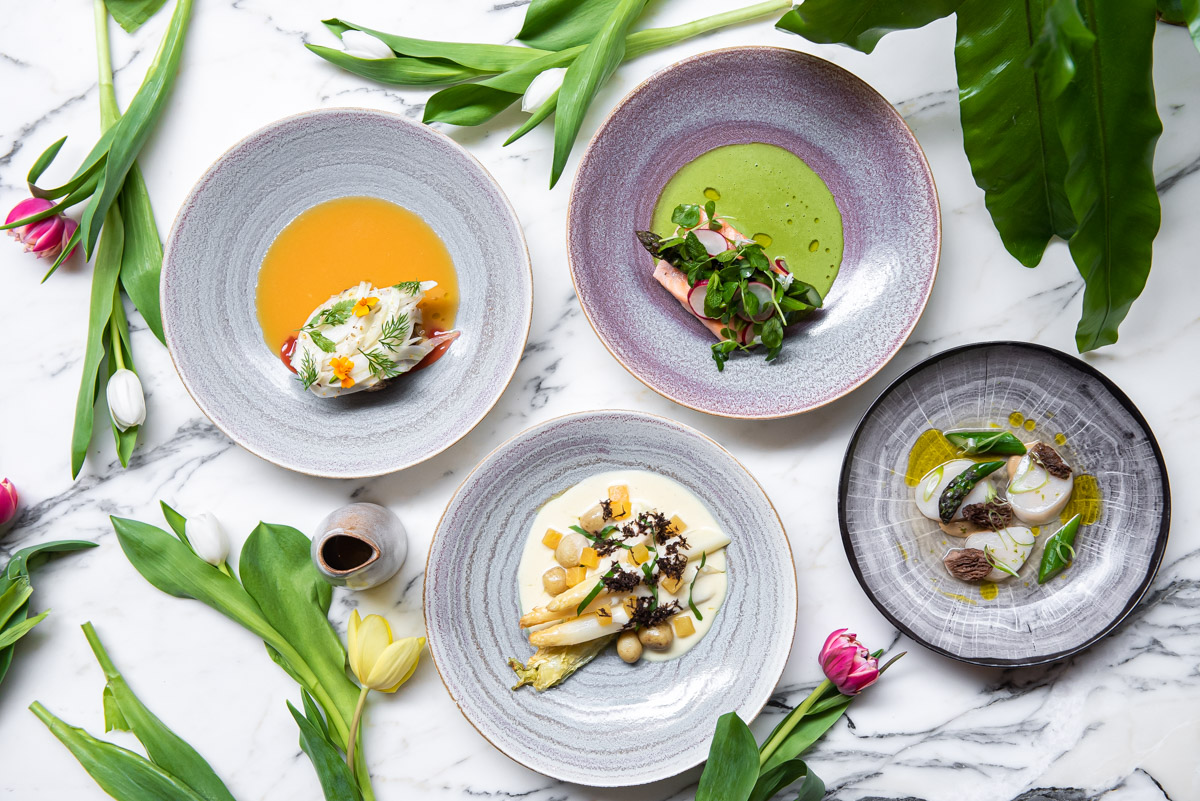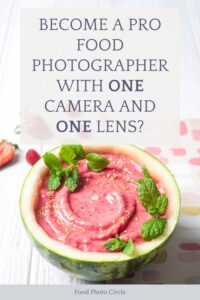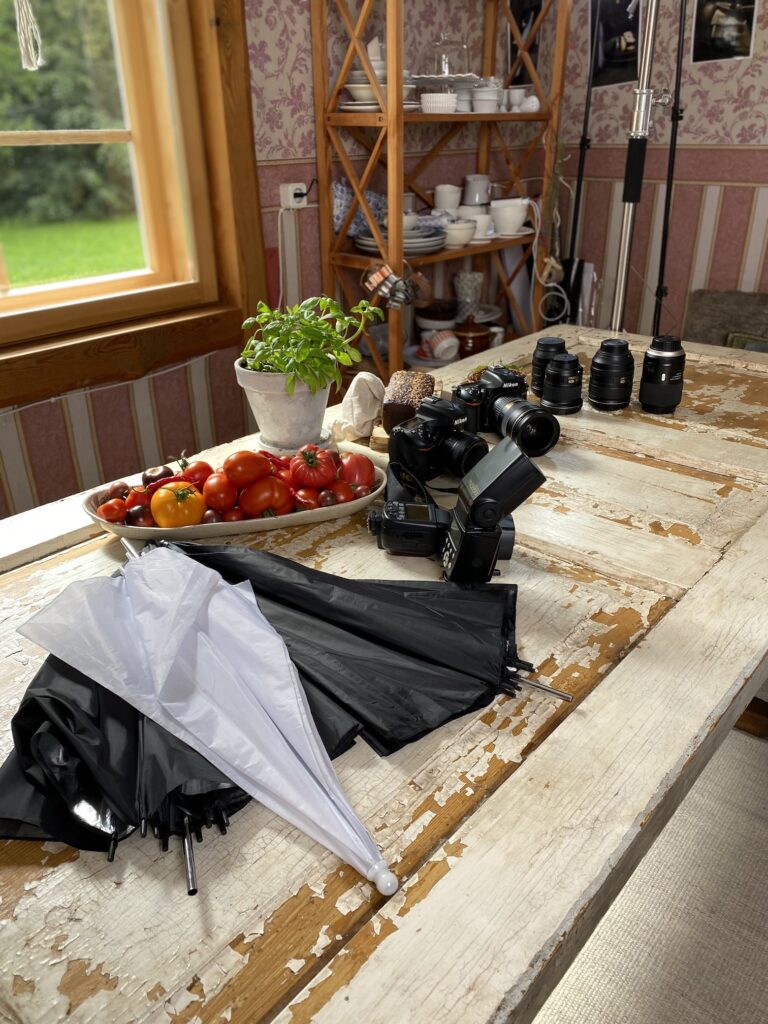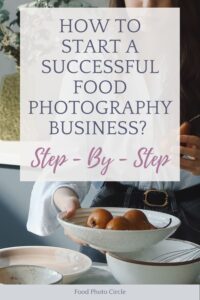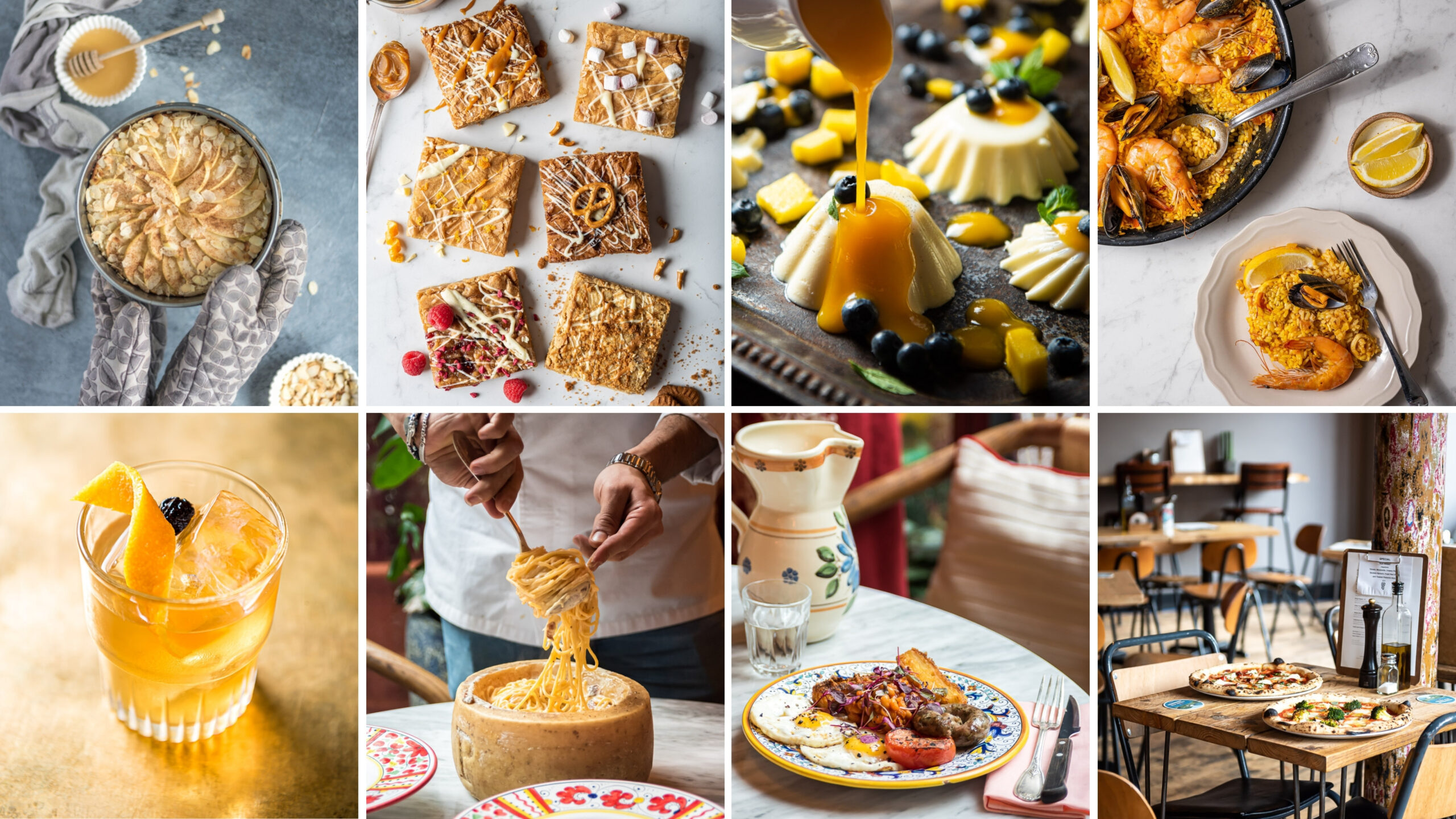
Food Photography Portfolio Tips:
Make your dream clients want to work with you!
Even if you're just starting out
As a food photographer, your portfolio is often the first thing potential clients will see when considering hiring you for a project.
Therefore, it’s important to have a strong and professional portfolio that showcases your skills and expertise in the field.
Your portfolio needs to answer the usual questions clients ask:
“Why should we hire YOU?”
“Because you need a photographer” is NOT an acceptable answer…

Follow these tips to help you build a killer food photography portfolio that will make your clients want to work with you!
And pay you the big bucks.

Niche down and show your food photography work in your portfolio
The first thing you want to do when putting together your food photography portfolio for maximum impact, is niching down.
You only want to show your food shots in your portfolio!
If you can’t convert your leads into clients is because they don’t trust your skills enough.
They don’t trust your skills enough because your portfolio is all over the place and doesn’t show enough food photography.
Don’t mix food photography with portraits (unless they’re portraits of chefs, food producers etc), fashion, weddings, street etc.

You can choose more than one niche. However, go for genres that relate to each other.
For example, food and interiors or food and still life.
Food and wedding is not a strong match – these two genres are completely different and attract two very different kinds of clients.
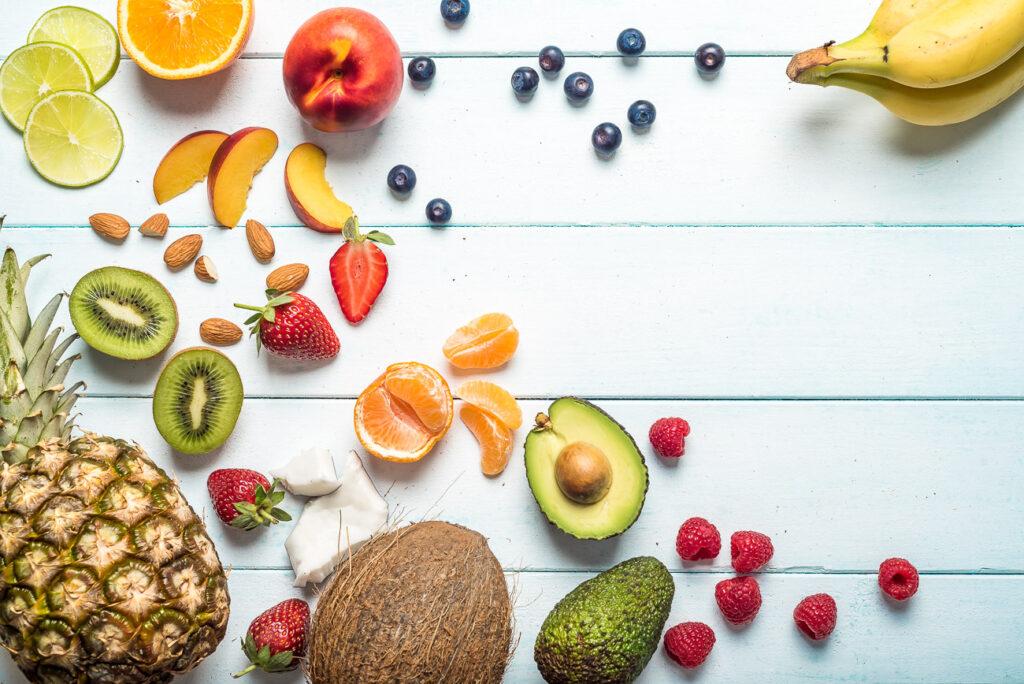
Only show images from clients you want to work with
Your food photography portfolio needs to show your ideal clients that you can shoot for them and produce the kind of images that they want.
This is counter intuitive and sounds a bit like the chicken and egg situation but let us explain.
You need to answer the question: who are your dream clients and what kind of photos do they want to see?

If you want to work with restaurants, you need to showcase restaurant work in your portfolio.
If you want to shoot for burger brands, you need to have burgers in your food photography portfolio.
Same for ice cream, same for magazines etc.
You can do this by shooting lots of personal work in the style that your clients are looking for.
You want to work for “AmazingFoodMagazine”? Get yourself a few copies, study their style, recreate that style and put it in your portfolio.
Dreaming of working with “UltimateVeganBurgerBrand”? Look at their website, IG, their billboards and ad campaigns and shoot some images that resemble what they are producing.

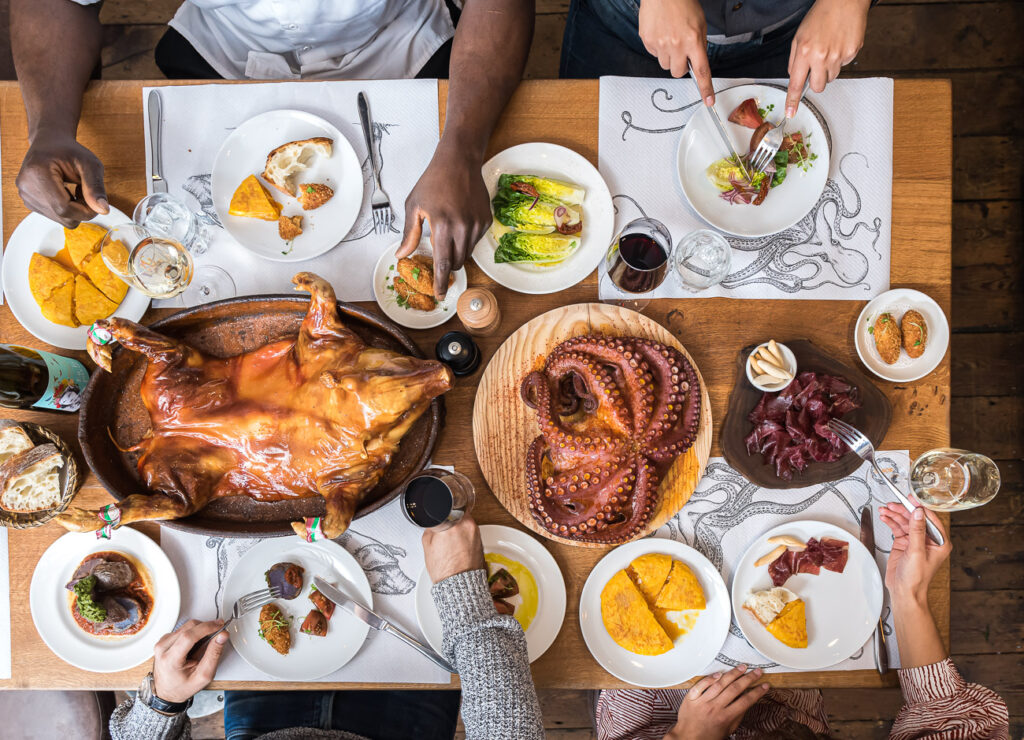
Start with your best food photos
When creating your portfolio, it’s important to only show the best work you’ve done in food photography.
This means selecting your strongest, most compelling images that showcase your unique style and approach to food photography.
Remember, the stronger the images you choose, the stronger your food photography portfolio will be, the easier it will be to get your ideal clients.
If you are not happy with your food photography yet, that’s ok!
Keep shooting, keep learning new skills and trying new techniques. practice makes improvement!
Depending on the layout you choose for your portfolio, start with between 30-50 images.
Don’t include mediocre or weak shots just to fill space – quality is more important than quantity in a portfolio!
It’s better to have 10 great shots than 20 good ones.
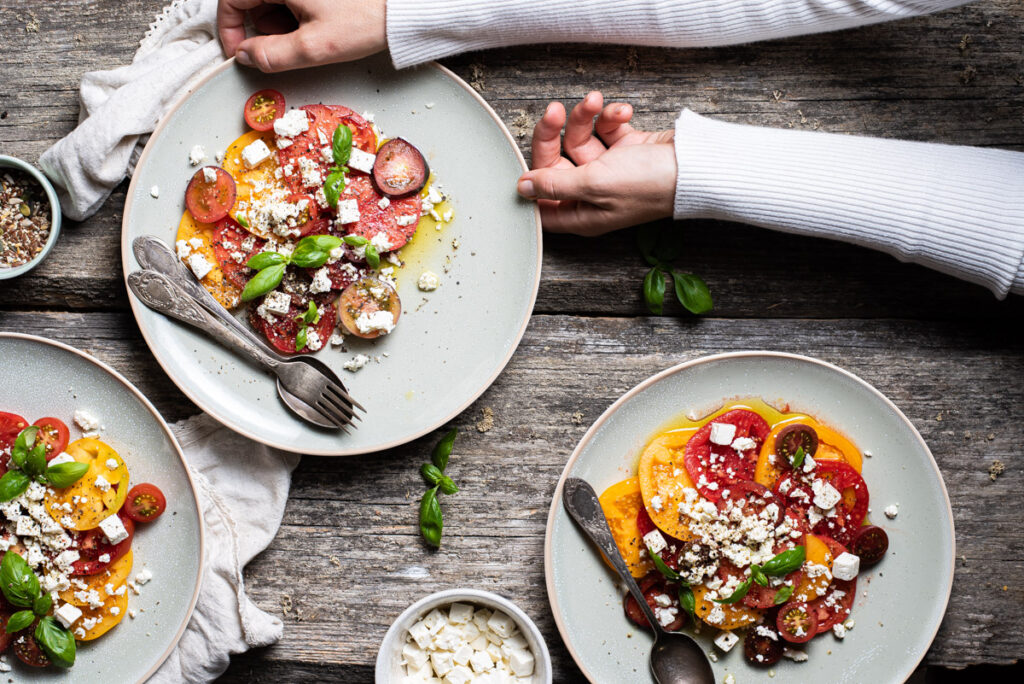
Showcase a range of food photography styles and techniques
To demonstrate your versatility and expertise as a food photographer, it’s important to include a range of styles and techniques in your portfolio.
Showing that you’re a well rounded food photographer is essential to demonstrate to potential clients that you have the skills and creativity to capture their specific vision and style.
Secondly, showcasing different styles and techniques allows you to highlight your skills and experience as a food photographer.
This way you can illustrate your ability to adapt to different lighting situations, use different camera angles, compose visually appealing shots, and use various camera settings and editing techniques to achieve a desired look.
This could include highly styled shots with perfect lighting and composition as well as candid, spontaneous images that capture the essence of food in a real way.

Let’s break down the kind of shots you should include in your portfolio:
- A good mix of commercial looking and editorial looking images is best.
- Make sure to include bright and colourful images as well as darker moods and tones.
- Use both natural and artificial light
- Mix soft light and hard light
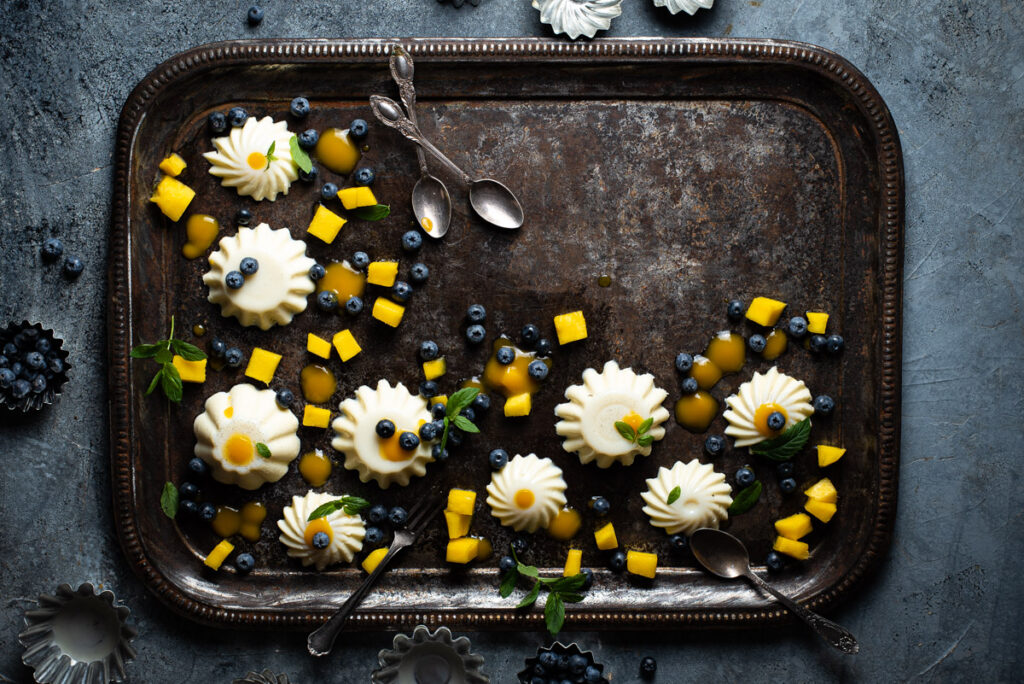
Include a variety of subjects and kinds of food photos
Following on our previous tip, it’s crucial to show your clients that you can shoot a large variety of food subjects and kinds of food photography in your portfolio.
This creates trust in the fact that “you’ve shot it all”.
Therefore you can also shoot what they have in mind (even if you don’t have that exact subject in your portfolio yet).
for example, if a client who needs you to shoot a sandwich sees that you’ve shot burgers, they can safely assume you can tackle sandwiches as well.
If they see beer shots in your drink photography portfolio, they trust that you can do a good job at shooting cocktails too.

Make sure you include a good mix of:
- Subjects – savoury, sweet, drinks, salads and pastas, burgers and sandwiches, hot food and cold food, raw and cooked food…
- Occasions and meals – breakfast, lunches, dinners, Christmas, drinks…
- Angles – portraits, landscapes, overhead shots, 45 degrees, eye level…
- Storytelling – hands, action shots, close ups and macros, larger scenes…
- Supporting shots – interiors, portraits of chefs, details…
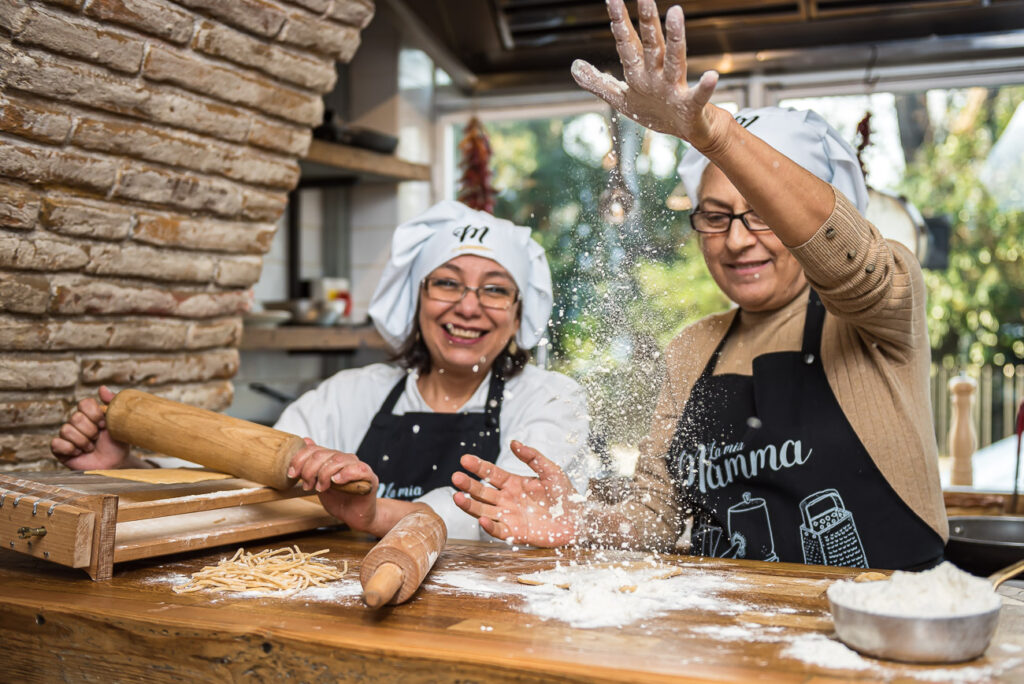
Choose the best platform to showcase your food photography portfolio
How do you actually build and showcase your food photography work?
There are several factors to consider but overall you want to aim for a platform that is user friendly, easy to use, simple and customisable.
Remember that you’re a photographer, so you need to choose a layout and a platform that will put your images first.
You don’t need much text or fancy stuff – content is king.
Let the images speak for themselves so your client can focus on them without distractions.
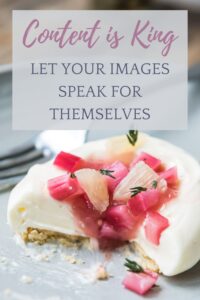
Look for platforms that offer features specific to photographers: Some platforms, such as Squarespace, Format and Adobe Portfolio, are specifically designed for photographers and offer features like customisable portfolios, layouts and galleries.
Take the time to research and compare different platforms to find the one that best fits your needs.
We have a whole article about this
Start with a template that speaks to you and customise it to fit your branding and style.
Then populate it with your images.
We’ll tell you how to arrange the layout in the next tip.
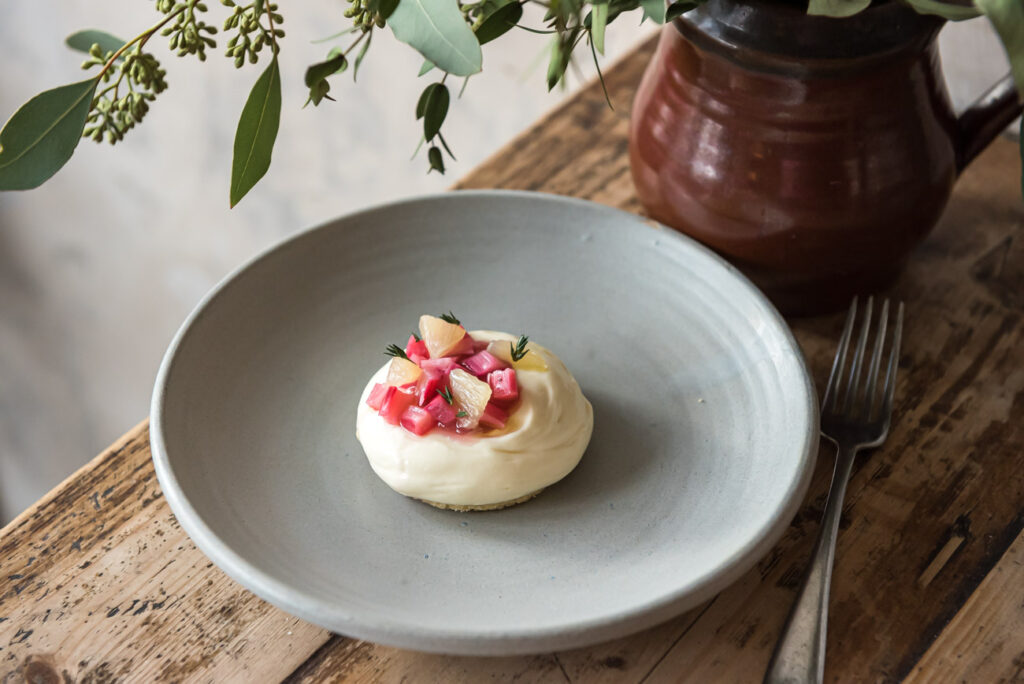
Tell a story with your whole food photography portfolio
A successful and compelling food photography portfolio should not only showcase your technical skills, but also tell a story with your images.
This means capturing the mood, atmosphere, and emotions of a scene, as well as the flavours, textures, and aromas of food in your whole portfolio.
Include a mix of close-up shots and wider, contextual images to create a narrative with your photos.
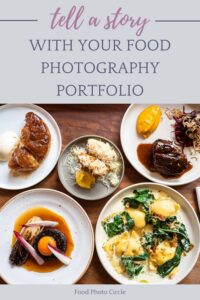
Your portfolio should “flow” and hypnotise your clients to look at it longer.
Each image should follow and be followed by other images that make sense together and create a smooth progression.
When you create your layout, you can group images by colour and create a gradient from blues to violets to pinks to reds etc
Or you can pair pictures based on subjects or themes for example moving from breakfast subjects to lunches to dinners and then drinks etc.
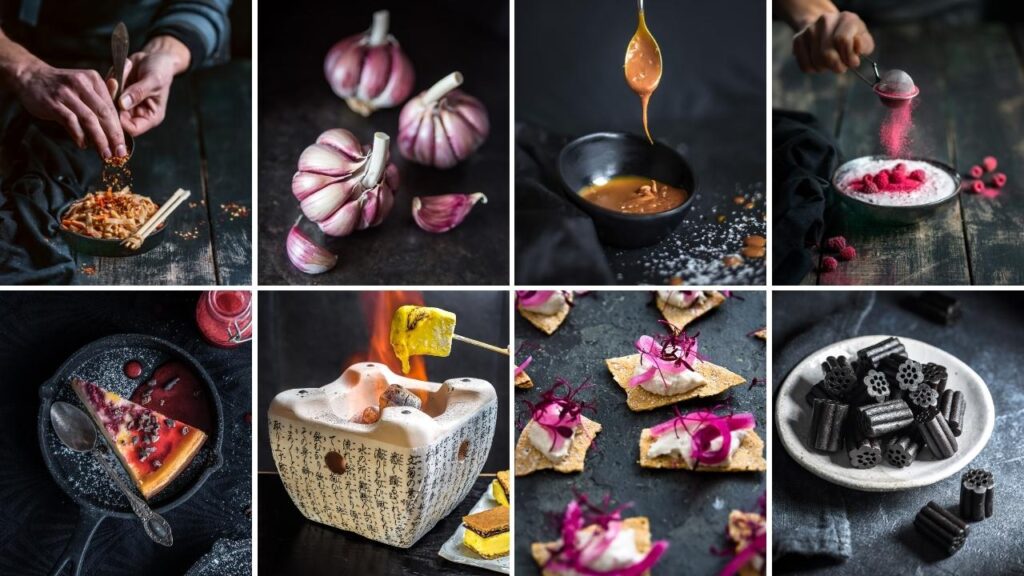
Include client and project details
In addition to the images themselves, it’s also important to include client and project details in your food photography portfolio.
This could cover the name of the client, the type of project, and any relevant information about the shoot or the food featured in the photos.
If you haven’t worked with any clients yet, no worries!
You can include details of how you shot the image, if it was natural or artificial light, if you worked in a team or if you styled the images yourself.
This will help potential clients understand the context of your work and the type of projects you’re capable of handling.
Just pop it into the image caption or show it on an overlay that appears when they click to learn more about the image.
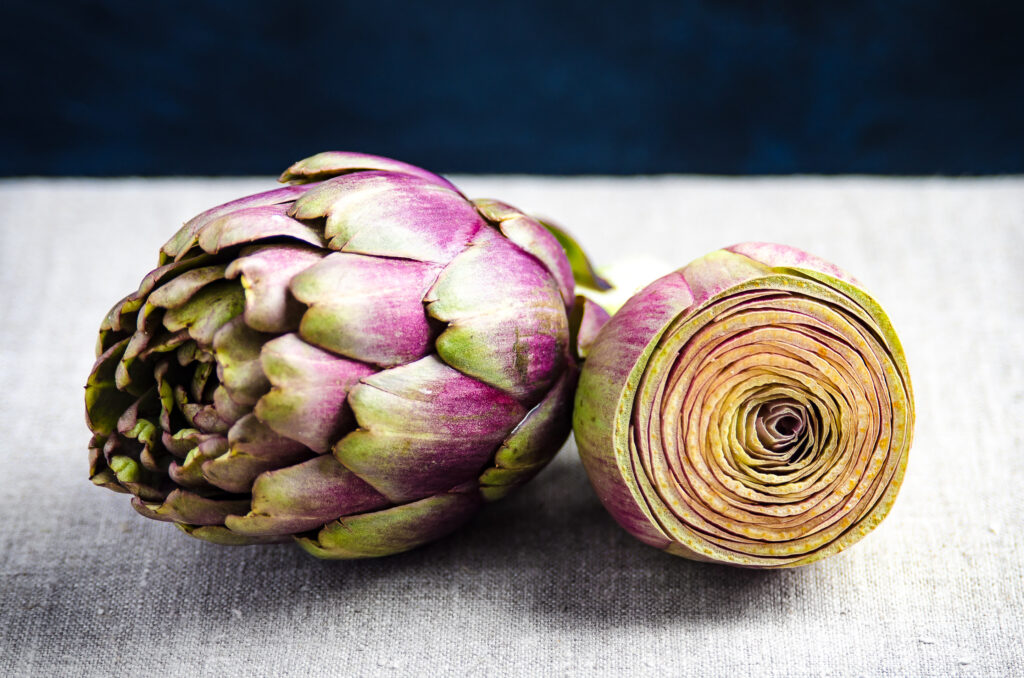
Include series to illustrate your food photography storytelling abilities
To demonstrate to your ideal client that you can go beyond creating a single great image, you need to include series in your food photography portfolio.
Since many clients will need you to shoot a bunch of images following a specific concept, you need to show them that you can create a group of images that is cohesive, consistent and tells a deeper story.
Think of a restaurant shoot – the client will require you to shoot a series of many images that will need to work together on their website or social media profiles.
If you shoot them all in a different style, they won’t look very consistent.
Or when shooting a magazine feature you’ll have different subjects and recipes but you’ll need to shoot with the same mood and vibe.
This is one of the main factors that will separate you from your competition and elevate you!
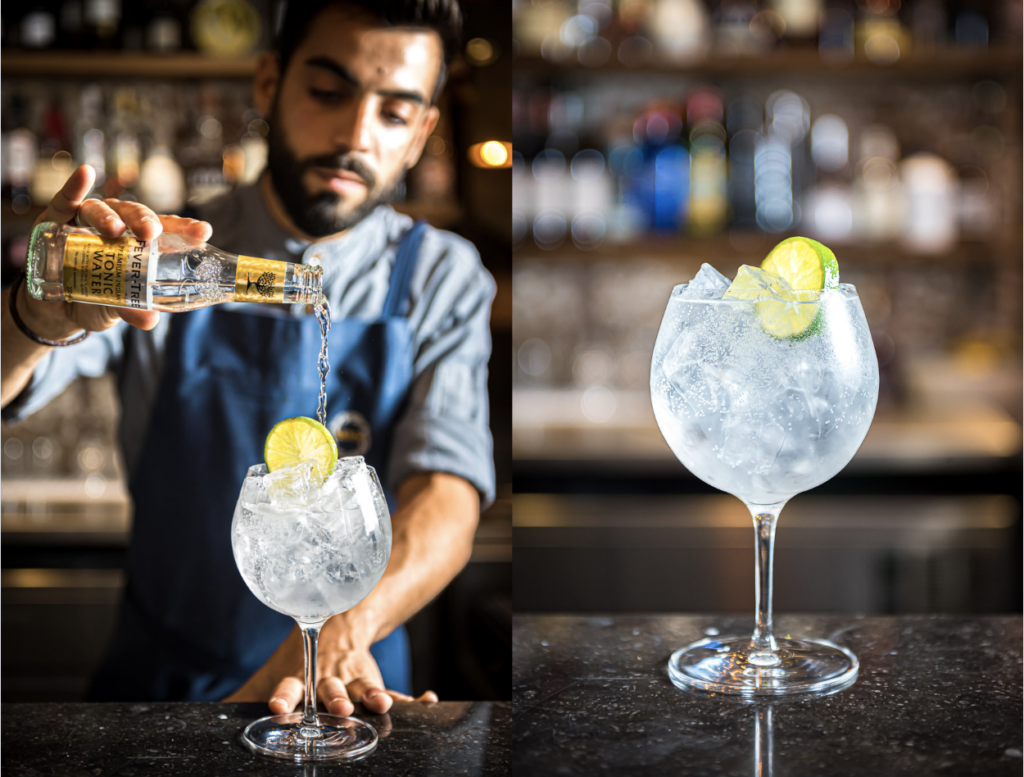
Update your food photography portfolio regularly
It’s super important to regularly update your food photography portfolio with your latest work.
By frequently updating your portfolio, you’re showing potential clients that you’re actively working as a food photographer and have new and exciting content to share.
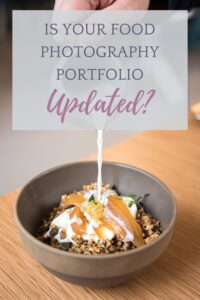
Also, as you continue to grow and improve as a food photographer, it’s important to update your portfolio to reflect your current skills and style.
Make sure to replace your old photos with new ones so that overtime the overall quality of your portfolio will dramatically increase.
Show off your latest and greatest!
Select a couple of portfolio worthy images from each new shoot you do.
As you shoot, keep a list or folder of your favourite shots so you can easily add them to your portfolio when it’s time for an update.
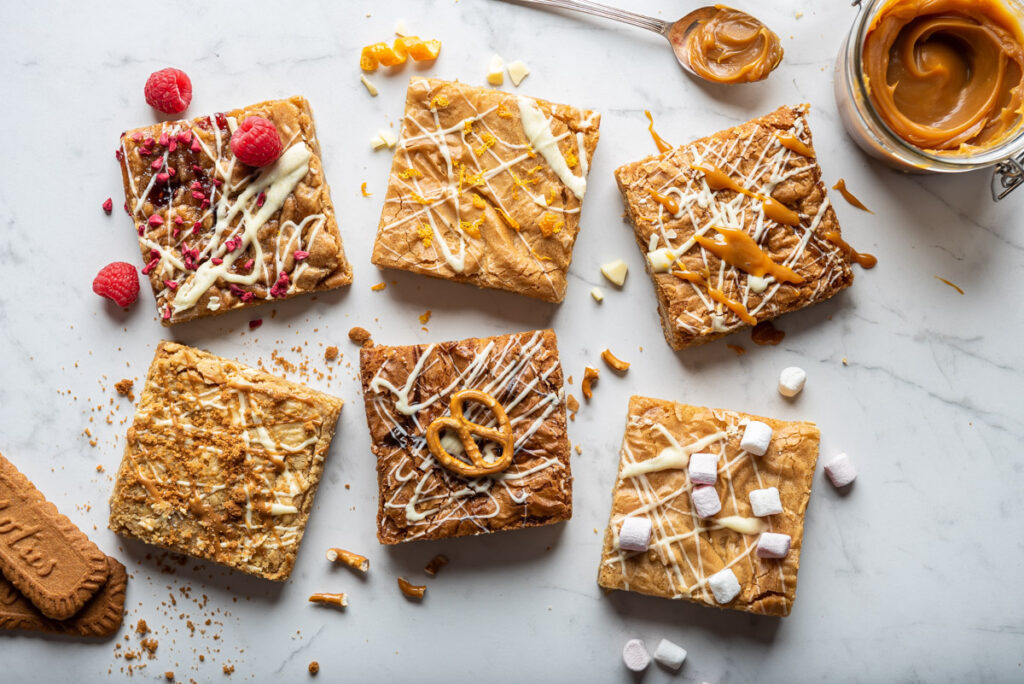
Get feedback on your food photography portfolio
Receiving feedback on your food photography portfolio is a game changer and it will help you skyrocket your success in no time.
Having different sets of eyes reviewing your portfolio can help you identify areas where you can improve and grow as a photographer.
By regularly seeking out feedback, you can continue to develop your skills and style.
Now, not all feedback is equal.
Asking friends and family is great to boost your ego but it won’t get you very far in your business.
You need the opinion of other professional photographers and you need to attend a portfolio review to make sure your portfolio is in tip top shape before presenting it to your clients!
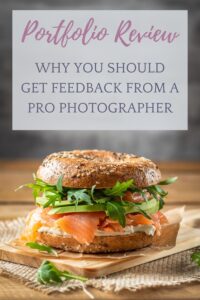
A pro food photographer has a more objective perspective and can provide more specific, technical feedback.
Professional food photographers can offer advice including technical details like lighting and composition, as well as guidance on how to improve your portfolio and stand out as a food photographer in your market.
They have been working in the industry for a long time and have a deep understanding of what clients want and what makes a converting portfolio.
They will guide you on exactly what’s missing in your portfolio, what you should remove and what you should keep.
They can give advice on how to structure your layout and galleries, how to present your work to clients to make sure they say yes to working with you!
Getting feedback from a pro food photographer is the only way to ensure that your clients will want to work with you once they see your work.
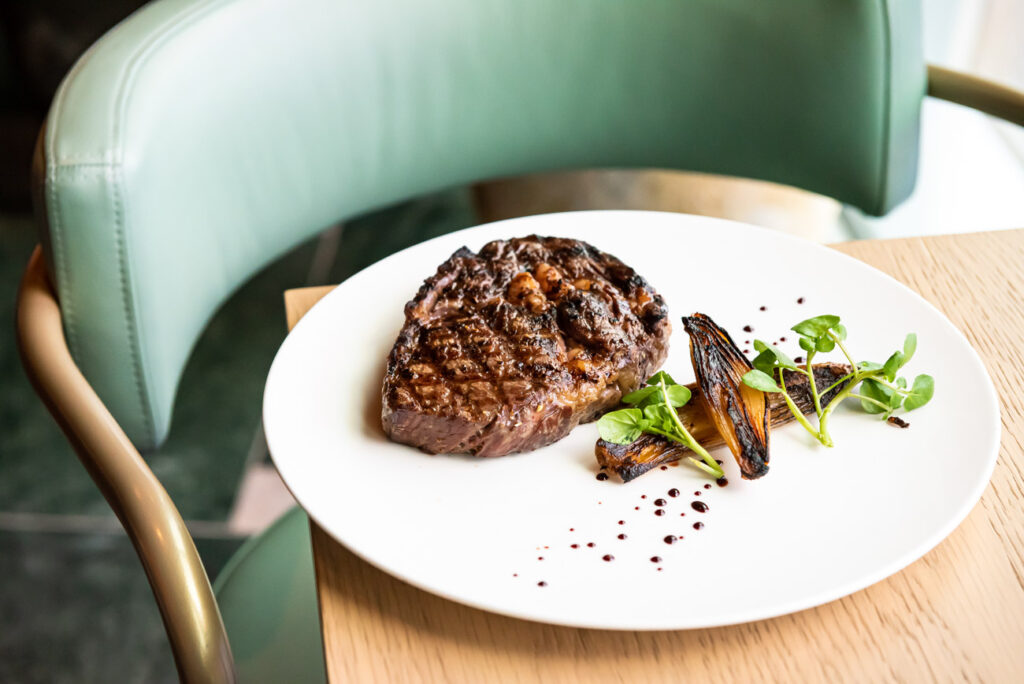
Conclusion
Having a stunning food photography portfolio is a must if you want to make money with your skills and work with your ideal clients.
With the feedback and guidance of a pro, you can build an effective portfolio that will convert leads into clients who want to work with you!
P.S. Make sure your DOWNLOAD OUR FREE PDF about building a portfolio!





